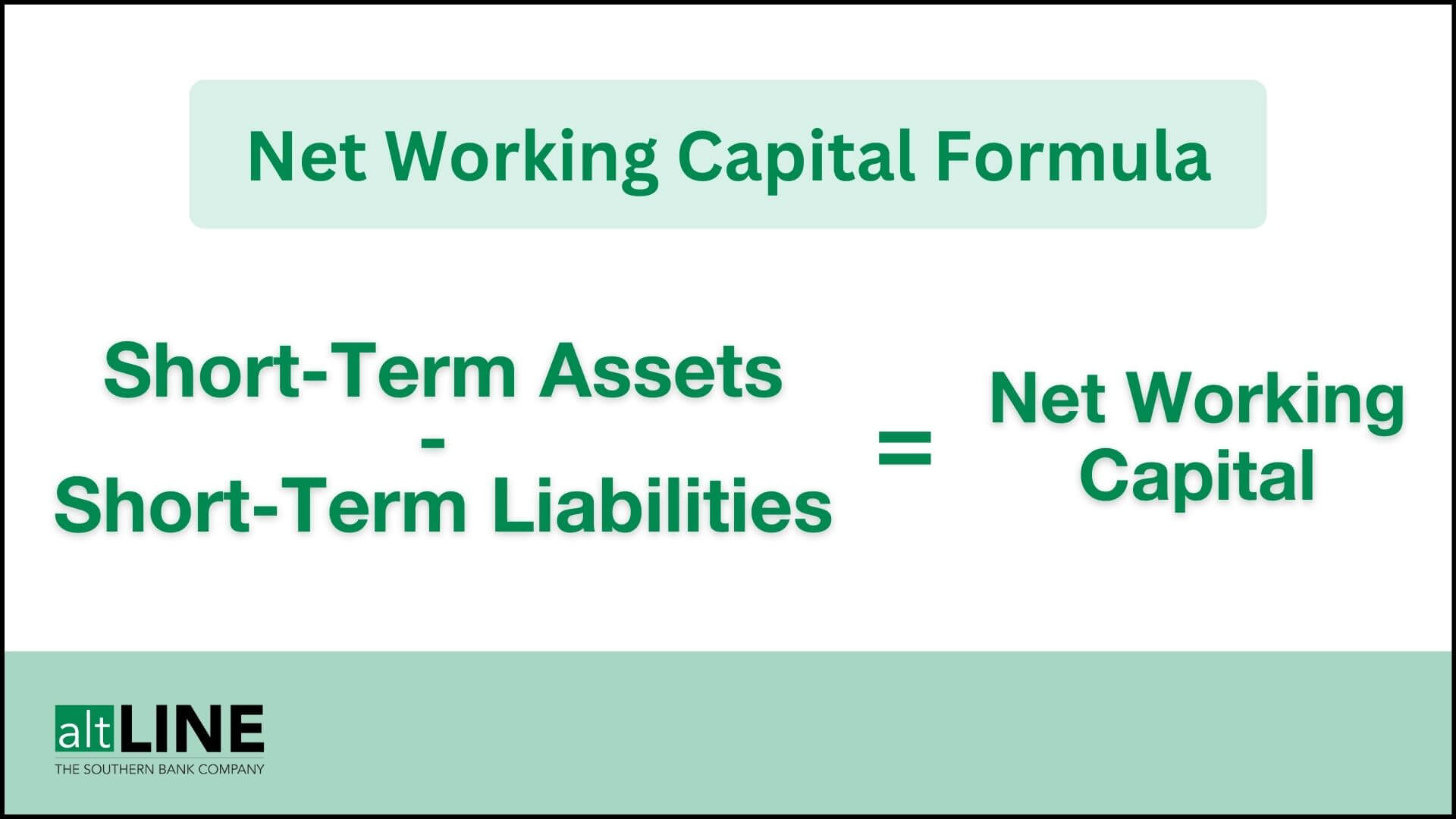What Is Net Working Capital? How to Calculate and Formula
Last Updated May 29, 2024
An organization’s net working capital paints a picture of its overall financial health and, if sufficient, ensures it has enough funds to maintain operations without concern. But for business owners, analyzing working capital involves more than just knowing its definition and how to calculate it; the process involves meticulous tracking and managing so you understand the factors that cause working capital changes.
You might not know that there are actually a number of ways to calculate net working capital depending on what you’re aiming to analyze specifically. For instance, you might be hoping to strictly analyze your net operating working capital, or perhaps your net working capital requirements to determine how much money you need to pay suppliers on-time.
But what are these more specific, lesser-known working capital-related formulas, what do they all mean, and how do you go about thoroughly and effectively managing net working capital? Continue reading to find out.
What Is Net Working Capital?
Measuring net working capital (NWC) means gauging the difference between a company’s current assets and liabilities. NWC is often used to gauge a company’s short-term health and liquidity.
Some people think that another term for “net worth” is “working capital”. While both calculate a company’s assets and liabilities, the key difference is in which ones they consider. Net worth considers a company’s entire assets and liabilities, while net working capital only measures the current ones.
Why Is Net Working Capital Important?
Net working capital reveals to a business’s decision-makers whether or not the business is able to cover all of its expenses. Plus, knowing how much working capital you need to maintain sufficient functionality is pivotal to avoiding challenges that you can’t financially recover from.
A good net working capital figure should be greater than zero. Otherwise, it means that you might not be able to meet all of your financial obligations.
There are some who believe that a company’s net working capital shouldn’t be too high, though, since a large number of unspent assets could mean that the business isn’t making the most of what it has and pushing as hard as it could be for growth.
Of all markers of a business’s success, net working capital is perhaps the clearest one, especially when viewed over time or in comparison with other companies in the industry.
How to Calculate Net Working Capital
Calculating net working capital isn’t difficult once it’s clear what is being factored into the calculations. Essentially, net working capital is concerned with short-term assets and liabilities, which mean those that will be paid or come due within one year.
As stated above, the net working capital of a business is the difference between these two things.
One can calculate net working capital using all assets and liabilities or just select ones, depending on what the analyst is focused on. In most cases, all will be included, so it’s important to know exactly what aspects of a business constitutes “assets” or “liabilities,” even if it seems obvious at first glance.
Business Assets
A business’s assets include all of its cash and everything it owns. These assets are separated into two groups:
- Long-term assets
- Short-term assets
Long-term assets are things that are hard to liquefy or turn into cash – they won’t be liquified within the next year. These include things like:
- Property
- Long-term investments
- Copyrights and trademarks
- Franchises
Short-term assets, also called current assets, are assets that will be liquified within the next year. Short-term assets include:
- Cash (and cash equivalents)
- Trade receivables (accounts receivable or notes receivable)
- Notes receivable
- Inventory (including raw materials and items in the process of being made)
- Short-term investments
- Marketable securities
- Prepaid expenses (like rent or insurance)
For the purposes of calculating net working capital, it’s important to know the difference between long and short-term assets because only short-term assets are factored in – long-term assets are ignored completely.
Business Liabilities
Simply put, a business’s liabilities are its financial obligations, or money it’s agreed to pay others.
Just like with assets, a business’s liabilities can be short or long-term. Long-term liabilities are things like:
- Deferred taxes
- Retirement and pension obligations
- Deferred revenue
- Bonds payable
Short-term, or current, liabilities are due within a year and include:
- Accounts payable
- Rent and utilities
- Debt
- Supplies and materials
- Income tax
As with assets, a business only needs to worry about short-term debts when calculating net working capital, ignoring long-term debt altogether.
Net Working Capital Formula
Calculating business figures can be intimidating, and you may find yourself asking, “How can you determine a company’s net working capital from a balance sheet?” Fortunately, figuring out a business’s net working capital is actually incredibly easy. Once a business is clear on what its short-term assets and liabilities are, calculating the net working capital is a matter of simple subtraction.

What is the formula for calculating net working capital? The most straightforward working capital formula for doing this is also by far the most often used:
Short-Term Assets – Short-Term Liabilities = Net Working Capital
This formula takes everything into account for a clear, general overview.
Net Operating Working Capital Formula
If the company wants to analyze only the free cash flow or operating assets instead of the company’s total assets, the formula for net operating working capital would be:
Short-Term Assets (Except Cash) – Short-Term Liabilities (Excluding Debt) = Net Operating Working Capital
Most businesses use the standard net working capital formula in general practice, but knowing how to alter the formulas based on what measures you’re analyzing can be helpful, too. A couple more examples of this are the net working capital requirement and net working capital ratio.
Net Working Capital Requirement Formula
A near cousin to net working capital is the organization’s net working capital requirement.
Essentially, most companies have to pay suppliers for the goods (or raw materials for goods) that it sells. But there’s naturally a lag time before the company makes money on those goods because it has to wait for customers to pay their invoices.
Related: How to Get Invoices Paid Faster
Net working capital requirement is the amount needed to bridge that gap so that the organization is able to pay its suppliers on time. The formula to calculate this is:
Accounts Receivable + Inventory – Accounts Payable = Net Working Capital Requirement
Net Working Capital Ratio
Like net working capital, a company’s net working capital ratio shows how much money it has to pay for short-term obligations. The net working capital ratio formula is:
Short-Term Assets / Short-Term Liabilities = Net Working Capital Ratio
The ratio will vary between companies and industries, but a healthy range is usually 2:1, meaning that the business has twice as many assets as liabilities. However, depending on the industry, a ratio as low as 1.2:1 may be acceptable.
Below that means the business might not be able to meet upcoming financial obligations. Too high, and it might mean the company isn’t using resources effectively.
Cash Gap Formula
A cash gap or financing gap measures the time between purchasing inventory and receiving money from client invoices. The financing gap formula is as follows:
Days’ Inventory + Days’ Receivables – Days’ Payables = Cash Gap
The calculations above can be either a long-term or short-term financing gap formula, depending on your business needs.
Managing Net Working Capital
Calculating a company’s net working capital once is an excellent first step, but it’s crucial to the organization’s success that it be tracked over time in order to get a clear understanding of whether the business is becoming more successful over time as well as whether there are certain times of the year when the business is healthier than others.
Net working capital needs to be managed so that it remains in a healthy range. It can also help decision-makers identify areas where the business operations might improve. A few of those areas include:
- Collections: How efficiently are accounts receivable being collected? Are there a number of outstanding unpaid customer invoices?
- Debts: Are debts being paid promptly in order to build good relationships and avoid late fees?
- Inventory: How efficiently is inventory being managed? Is there a large surplus sitting on the shelves, or does it move pretty quickly?
Low working capital isn’t good news for a business, but finding out sooner than later can give it enough time to get back on track.
Related: How to Improve Working Capital
In-Summary: Net Working Capital
As you can see, an accurate measure of an organization’s net working capital is vital to understanding its short-term financial health. Fortunately, it’s also incredibly easy to calculate using a balance sheet and the formulas laid out above.
Keeping track of these measurements on a regular basis is one of the most important things a business can do to ensure a healthy liquidity ratio and keep operating at maximum efficiency.
Net Working Capital FAQs
What’s the difference between working capital and operating working capital?
The formula for net working capital is simply the difference between a company’s current assets and its liabilities. “Current,” in this case, refers to assets that can be converted into cash within 12 months and liabilities that are coming due within 12 months. Net operating working capital, on the other hand, accounts for only the assets and liabilities that play a continuous, or recurring role for a company. Therefore, cash and cash equivalents and short-term debt are not included in the operating working capital formula:
Operating Assets – Operating Liabilities = Operating Working Capital
What is adjusted working capital?
Adjusted working capital is another term for operating working capital, comparing a company’s operating assets with its operating liabilities. The formula for adjusted working capital is:
Operating Assets – Operating Liabilities = Adjusted Working Capital
What is the difference between working capital and net working capital?
Working capital is a financial metric that simply shows how much a company has in total current assets. Meanwhile, net working capital is a straightforward formula that also includes current liabilities: net working capital = current assets – current liabilities.
A business’s net working capital is generally considered a better representation of financial health than just working capital.
Is net working capital an asset?
Net working capital is not an asset. Rather, it is a financial metric revealing the difference between a company’s current assets and current liabilities. Examples of assets include buildings, machinery, land, company vehicles, securities, bonds, cash, and cash equivalents.
Can net working capital be negative?
Yes, net working capital can be negative. There’s actually a term for this situation: negative working capital.
It’s usually cause for concern when a business has negative working capital (meaning current liabilities are greater than current assets). Businesses should aim to have positive working capital, with at least 50% more in assets than liabilities, otherwise represented as a working capital ratio of 1.5 or higher.
Jim is the General Manager of altLINE by The Southern Bank. altLINE partners with lenders nationwide to provide invoice factoring and accounts receivable financing to their small and medium-sized business customers. altLINE is a direct bank lender and a division of The Southern Bank Company, a community bank originally founded in 1936.




